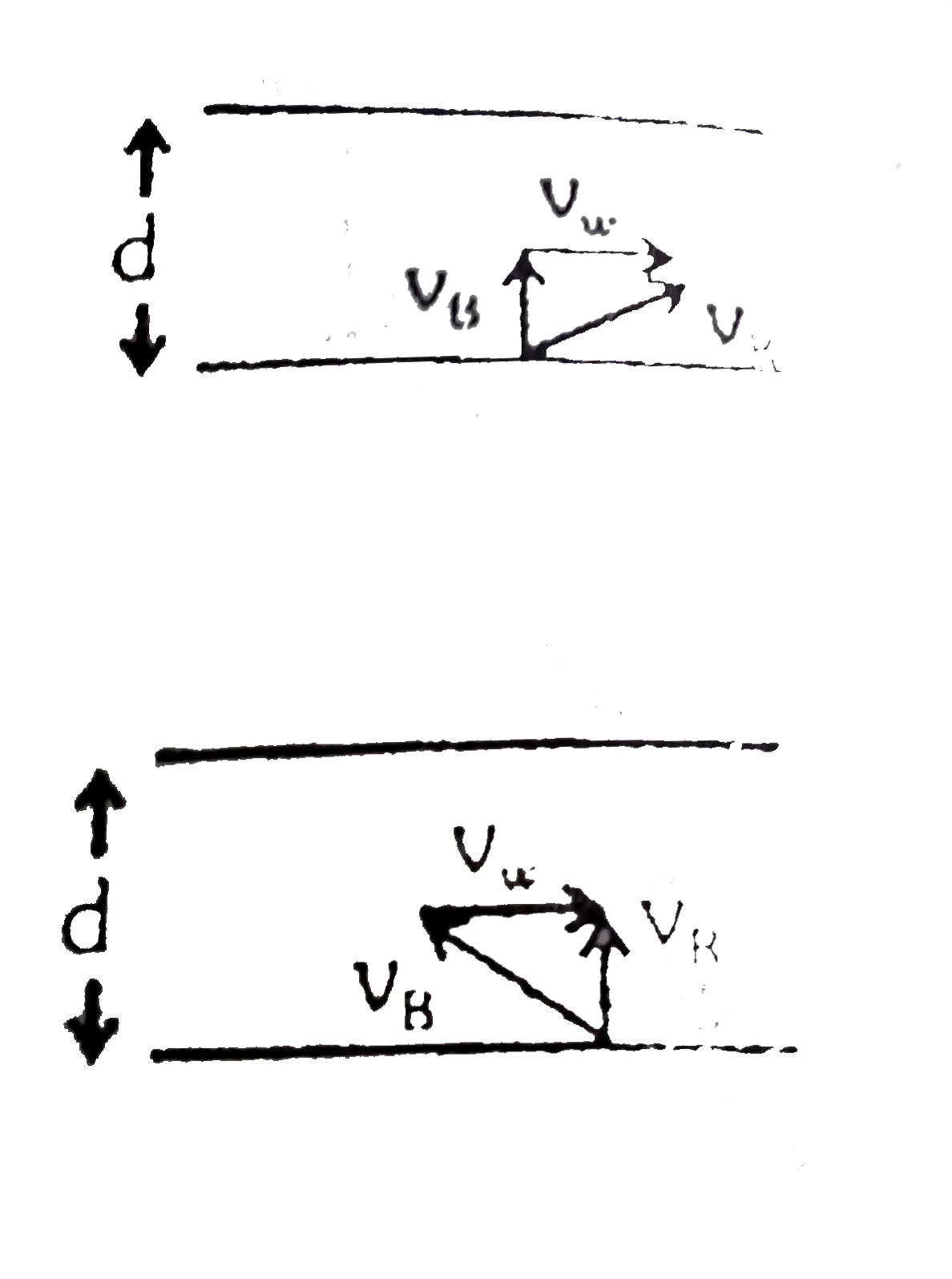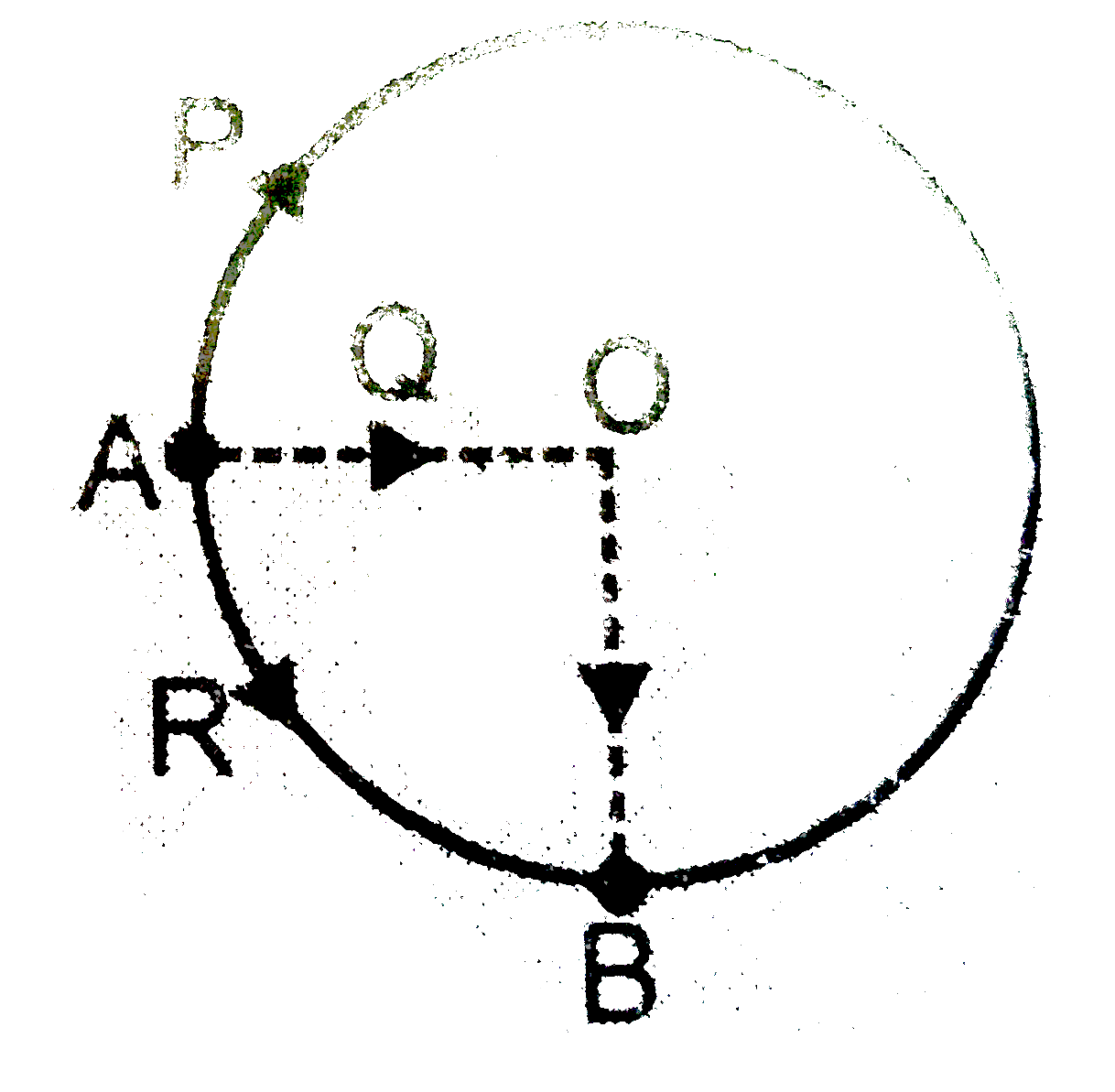In the previous question, the mean velocity of the rocket reaching the maximum height is :Solution in Gujrati
The correct Answer is:200m,vboat=1.20km/hr,vwater=0.72km/hr,
t=dvB=600s, drift=vw×dvB
120= vw×600s,vw=15msec
t=d√v2B−v2w=750
√1−(vwvB)2=45⇒(vwvB)2=925
vwvB=35⇒vB=1/53/5=13m/sec
dVB=600=d=600×13=200m

Topper's Solved these Questions
- MOTION IN A PALNEBOOK - ALLEN CHAPTER - MOTION IN A PALNEEXERCISE - Exercise-04[B]
14 Videos
- MOTION IN A PALNEBOOK - ALLEN CHAPTER - MOTION IN A PALNEEXERCISE - Exercise-05 [A]
11 Videos
- MOTION IN A PALNEBOOK - ALLEN CHAPTER - MOTION IN A PALNEEXERCISE - Comprehension#7
3 Videos
- KINEMATICS-2DBOOK - ALLEN CHAPTER - KINEMATICS-2DEXERCISE - Exercise (O-2)
47 Videos
- NEWTON'S LAWS OF MOTION & FRICTIONBOOK - ALLEN CHAPTER - NEWTON'S LAWS OF MOTION & FRICTIONEXERCISE - EXERCISE (JA)
4 Videos
Similar Questions
A boat is moving with a velocity 3ˆi+4ˆj with respect to ground. The water in the river is moving with a velocity −3ˆi−4ˆj with respect to ground. The relative velocity of the boat with respect to water is.
View SolutionA man wishes to swim across a river 0.5km. wide if he can swim at the rate of 2 km/h. in still water and the river flows at the rate of 1km/h. The angle (w.r.t. the flow of the river) along which he should swin so as to reach a point exactly oppposite his starting point, should be:-
View SolutionA graph between the square of the velocity of a particle and the distance(s) moved is shown in figure. The acceleration of the particle in kilometers per hour square is:-

View SolutionA particle is moving in xy-plane .At certain instant the components of its velocity and acceleration are as follows ux=3m/s,uy=4m/s,ax=2m/s2anday=1m/s2. The rate of change of speed at this moment is
View SolutionA piece of wire is bent in the shape of a parabola y=kx2 (y-axis vertical) with a bead of mass m on it. The bead can slide on the wire without friction. It stays at the lowest point of the parabola when the wire is at rest. The wire is now accelerated parallel to the x-axis with a constant acceleration a. The distance of the new equilibrium position of the bead, where the bead can stay at rest with respect to the wire, from the y-axis is:
View SolutionIn the previous question, find maximum velocity and maximum acceleration.
View SolutionThe graph shown the variation of velocity of a rocket with time. Then, the maximum height attained by the rocket is.
View SolutionIn the previous problem, the time taken to reach the maximum height will be decreased by:
View SolutionMaximum height reached by a rocket fired with a speed equal to 50% of the escape velocity from earth's surface is:
View SolutionA rocket is projected vertically upwards and its time velocity graph is shown in the figure-1.115. The maximum height attained by the rocket is :
View SolutionIn the previous question, the height attained by the rocket before deceleration is :
View SolutionA rocket is fired upwards. Its velocity versus time graph is shown in the figure-1.131. The maximum height reached by the rocket is:
View SolutionAn object projected upward acquires a velocity of 9.8 ms^(-1) , when it reaches half of the maximum height, The maximum height reached is :-
View SolutionA body is throw up with a velocity 'u'. It reaches maximum height 'h'. If its velocity of projection is doubled the maximum height it reaches is _____
View SolutionA body is throw up with a velocity 'u'.It reaches maximum height 'h'.If its velocity of projection is doubled the maximum height it reaches is ____
View SolutionA body is throw up with a velocity 'u'. It reaches maximum height 'h'. If its velocity of projection is doubled the maximum height it reaches is _________
View Solution
